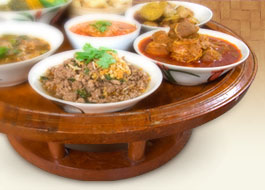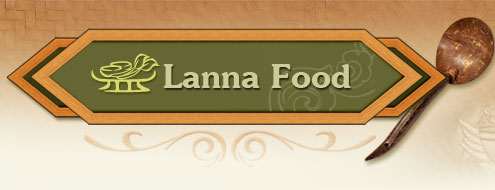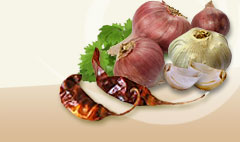Muskmelon |
|
|
 | Cucumis melo Linn. |
|
| |
 | Cucurbitaceae |
|
| |
 | Cantaloupe, Casaba, Honey dew melon, Muskmelon |
|
| |
 | Nataeng (Northern); Taeng king, Taeng ching (Northeastern); (Phak Phuen Ban A-han Thai, 2005, 186); Di (Karen); Sok se-ra (Khmer) (Wut Wuthithamwet, 1997, p. 218) |
|
| |
 | Cultivated climber of a foreign origin. Legend says it was originally grown in a castle named Cantaloupe and was named after the castle. The fruit has white streaks from end to end. Lanna People call the immature fruit Ba taeng ching and ripe ones ba taeng lai. Soft fragrant, green or yellow when ripe. Ovide with numerous seeds like those of a pumpkin. The fruit is formed best around June-July. (Rangsan Chanta and Rattana Phromphichai, 1999, pp. 2577-2578) |
|
| |
 |

Contains Vitamin C and phosphorus (Phak Phuen Ban A-han Thai, 2005, p.186) |

Induces urination, used as a tonic, induces milk flow in women who just gave birth, as a cardio-tonic, a neurotropic treatment, to relieve urinary tract infections (Phak Phuen Ban A-han Thai, 2005, 186) Leaves have a cooling taste and are used to relieve fever, flowers are bitter and cool. Young flowers are dried and boiled for drinking to induce vomiting or to relieve jaundice or made into a powder to treat nose cankers. Fruit has sweet cooling taste, used to reduce fever, induce milk flow or as a sweetening; seeds are oily and have a cool taste, stimulate urination, digestion, treats cough. Roots have a cool bitter-taste and can be boiled and drunk to induce vomiting and act as a laxative. (Wut Wuthithamwet, 1997, p. 218) |
|
| |
 |
Phak Phuen Ban A-han Thai. (2005). Bangkok: Saengdaet. (in Thai). Rattana Phromphichai. (1999). .Taeng, In Saranukrom Wattanathai Thai Phak Nuea. (Vol. 5, pp. 2577-2578). Bangkok: The Siam Commercial Bank Foundation for the Encyclopedia of Thai Culture. (in Thai). Wut Wuthithamwet. (1997). Saranukrom Samunphrai: Ruam Lak Pesatchakam Thai. Bangkok: Odean Store. (in Thai). |
|
| |
|
|




